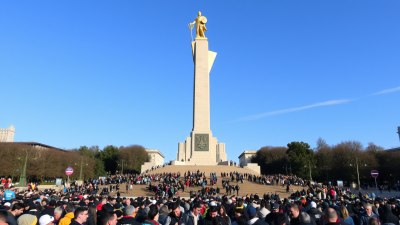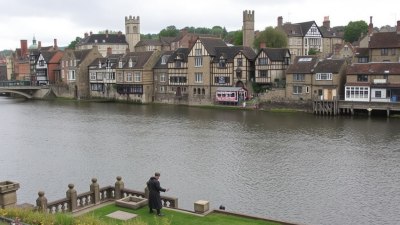The Independence Monument in Kyiv, Ukraine Breathes With the Crowd
Explore the significance of the Independence Monument in Kyiv, Ukraine, and its vibrant connection with the people.

Image created with Flux Schnell
The Independence Monument, or Maidan Nezalezhnosti, is a significant symbol of freedom and national pride in Kyiv, Ukraine. Located in the heart of the city, the monument stands tall amidst the bustling atmosphere of the square that shares its name. Completed in 2001, it was erected to commemorate the 10th anniversary of Ukraine's independence from the Soviet Union. However, its importance extends far beyond a mere celebration of national sovereignty. The monument has become a living entity that breathes with the crowds that gather around it, embodying the hopes, dreams, and struggles of the Ukrainian people.
Standing at a height of 61 meters, the monument features a golden statue of Berehynia, a mythical figure symbolizing peace and prosperity. She holds a branch of a laurel tree in one hand and a shield in the other, representing victory and protection. This imagery resonates deeply with the citizens of Ukraine, who have fought tirelessly for their freedom and national identity. The monument is not only a visual anchor for the city but also a powerful emblem of the collective memory of a nation.
Historical Context
To truly understand the significance of the Independence Monument, we must delve into Ukraine's history. The nation has endured centuries of foreign domination, including the Mongols, Poles, and Russians, each leaving an indelible mark on its people and culture. After the fall of the Soviet Union in 1991, Ukraine declared independence, a momentous event that redefined the national landscape. The years leading up to the 2001 dedication of the monument were marked by socio-political strife and upheaval, as citizens sought to carve out a sovereign identity amidst a backdrop of uncertainty.
The monument's creation was a response to the growing need for a national symbol that transcended the turbulent history. The location was also significant; Maidan Nezalezhnosti became the epicenter of various public rallies, protests, and celebrations. It is where the Orange Revolution took place in 2004, a pivotal moment underscoring the citizens' desire for democracy and change. The Independence Monument stands at the crossroads of history, serving as a witness to the tumultuous events that have shaped contemporary Ukraine.
A Living Symbol
Over the years, the Independence Monument has transformed into a living symbol of the Ukrainian spirit. It has served as a gathering point for various movements advocating for democracy, human rights, and freedom. When times of crisis arise, such as during the Euromaidan protests in 2013-2014, the monument becomes a focal point for solidarity and national determination. Thousands of individuals converge at the square, chanting slogans, sharing stories, and expressing their hopes for a better future.
The atmosphere at Maidan Nezalezhnosti ebbs and flows, breathing life into the monument itself. On any given day, you will find lively markets, street performers, and cultural events taking place within the square. The sights and sounds create a tapestry of life, echoing the resilience of the Ukrainian people. Whether it's a concert celebrating Ukrainian culture or a solemn vigil for fallen heroes, the monument remains at the heart of these collective experiences.
The Role of Art and Culture
The Independence Monument is not merely a static structure; it is a space that encourages artistic expression and cultural celebration. Various forms of art, including murals, performances, and exhibits, regularly grace the square, reflecting the dynamic nature of Ukrainian culture. The monument is a canvas for artists to convey their thoughts, emotions, and messages, making the square a hub for creativity and inspiration.











